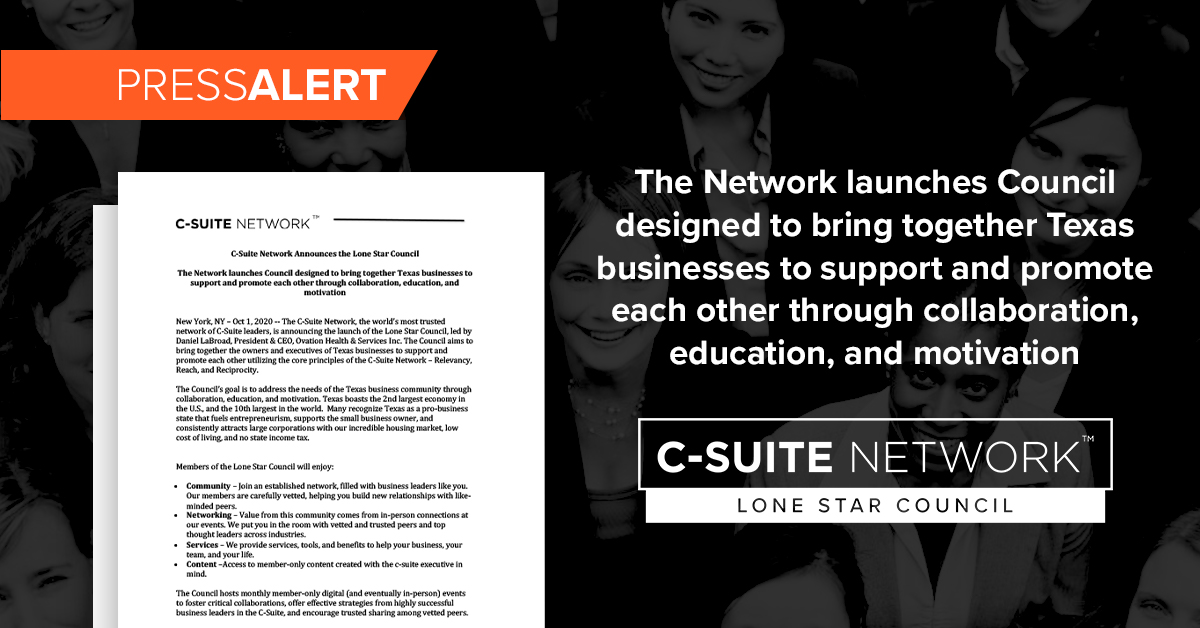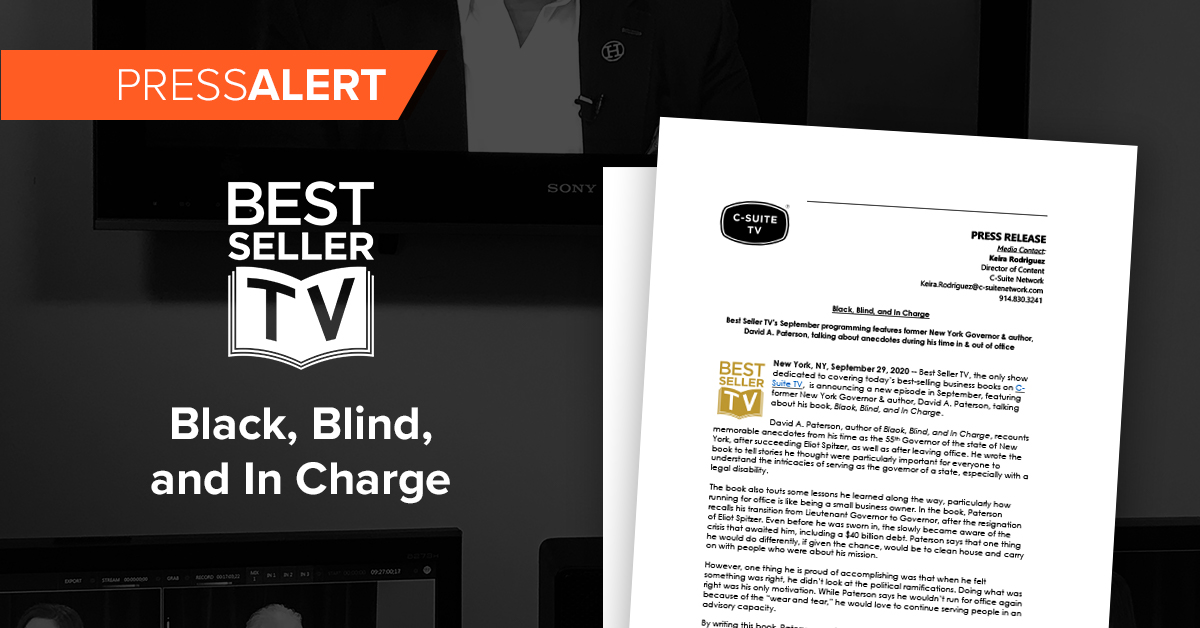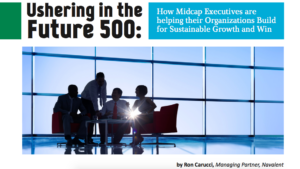
The C-Suite Network, the world’s most trusted network of C-Suite leaders, is announcing the launch of the Lone Star Council, led by Daniel LaBroad, President & CEO, Ovation Health & Services Inc. The Council aims to bring together the owners and executives of Texas businesses to support and promote each other utilizing the core principles of the C-Suite Network – Relevancy, Reach, and Reciprocity.
The Council’s goal is to address the needs of the Texas business community through collaboration, education, and motivation. Texas boasts the 2nd largest economy in the U.S., and the 10th largest in the world. Many recognize Texas as a pro-business state that fuels entrepreneurism, supports the small business owner, and consistently attracts large corporations with our incredible housing market, low cost of living, and no state income tax.
Members of the Lone Star Council will enjoy:
- Community– Join an established network, filled with business leaders like you. Our members are carefully vetted, helping you build new relationships with like-minded peers.
- Networking– Value from this community comes from in-person connections at our events. We put you in the room with vetted and trusted peers and top thought leaders across industries.
- Services– We provide services, tools, and benefits to help your business, your team, and your life.
- Content–Access to member-only content created with the c-suite executive in mind.
The Council hosts monthly member-only digital (and eventually in-person) events to foster critical collaborations, offer effective strategies from highly successful business leaders in the C-Suite, and encourage trusted sharing among vetted peers.
Along with the Council membership, you’ll receive C-Suite Network Executive Membership, which provides access to key resources and discounted business services that will give you a success roadmap. More than anything, we are on the front lines with strong, steady leadership so you’re not going through this time of great uncertainty alone.
“Dan brings a lot of business acumen to the C-Suite Network. His dedication to business in general, but particularly in the great state of Texas, makes him an ideal partner and council leader,” said Jeffrey Hayzlett, Chairman and CEO, C-Suite Network.
The C-Suite Network’s mission is to provide members with the most up-to-date tools and benefits to help them stay abreast of all the changes taking place in the business world.

“As a member of the C-Suite Network, I have experienced first hand the dedication and commitment with the membership,” said LaBroad. “Being part of a community that cares about the business owner and foments a culture of collaboration and growth is something that we can all be proud of. I look forward to the continued partnership with the C-Suite Network and expand the reach of the Lone Star Council.”
Whether you are a Texas-based business owner or executive, or wanting to do business within the state, we invite you to join the Council for $150/month or $1500/year.
Join the Lone Star Council for a Virtual Networking Mixer on Thursday, October 22nd @ 4:30PM CT. It will be an informal time to connect with local business peers and learn more about the Lone Star Council community. Here’s a link to register: https://c-suitenetwork.zoom.us/meeting/register/tJUofuypqDwsEtZoiZmDgOuX8iUB2YkV2_ug
For more information on the council, click this link.










